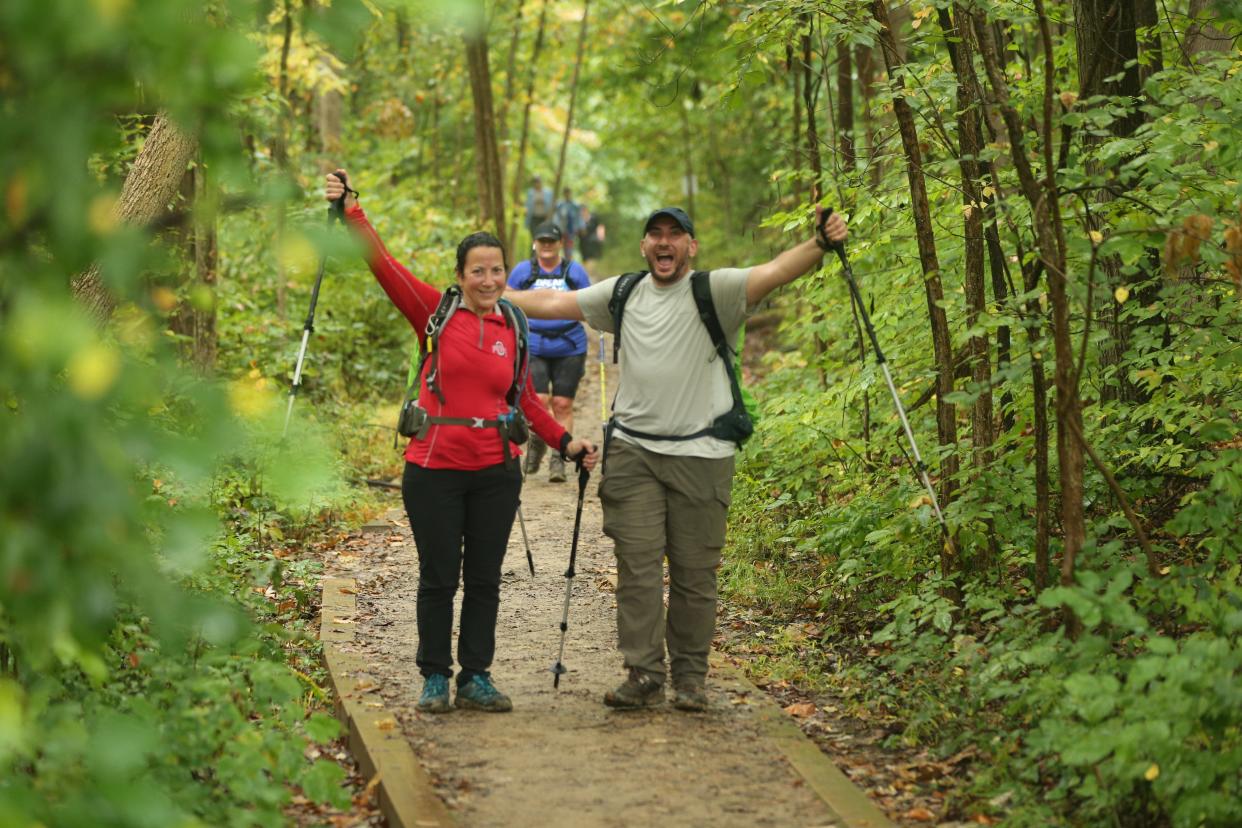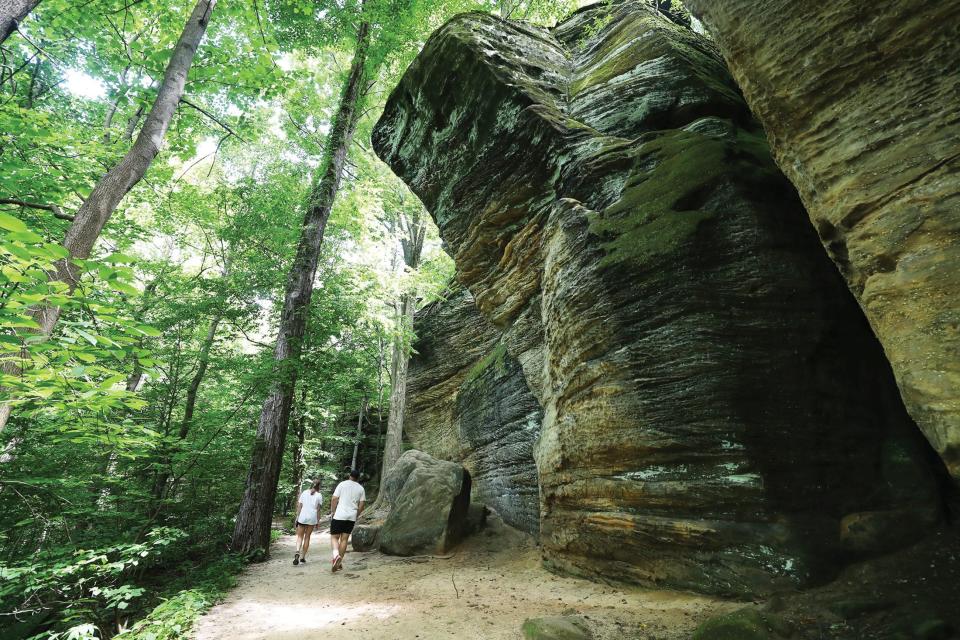Monday After: National Park in Stark and Tuscarawas counties? It almost happened

- Oops!Something went wrong.Please try again later.
- Oops!Something went wrong.Please try again later.
When former U.S. Rep. John F. Seiberling Jr., who represented the Akron area in Congress for 16 years, died at 89 in 2008, fellow Ohio Congressman Ralph Regula was generous with praise of the man considered a father of the national park north of Canton and Akron.
"Without John Seiberling, there would be no Cuyahoga Valley National Park," Regula said. "He was the original environmentalist. He was green way back when. He really was ahead of his time."
Similar words of admiration were spoken about Canton-area representative Regula when he passed at age 92 in 2017. The long-serving Regula "helped protect public lands," the Washington Post said in an obituary. Regula "pushed for acquiring the properties that now make up the Cuyahoga Valley National Park," noted the New York Times.
The two are forever tied by the time they spent seeking approval for the park. Seiberling, a Democrat representing Ohio's 14th District, and Regula, a Republican representing the 16th District, worked across the congressional aisle and walked over the political boundaries drawn on a state map to "co-parent" the park between Akron and Cleveland.
Regula pushed for park to stretch south
Always looking for ways to serve constituents, Regula envisioned the Cuyahoga Valley park project stretching farther south from Cuyahoga and Summit counties extending its reach into Stark and Tuscarawas counties.
A reflective "Through A Century" item that appeared Friday in The Canton Repository recalled Regula looking out for lovers of both history and nature. It reminded newspaper readers how Regula spoke to participants in a seminar at Imperial House Hotel in Stark County in 1973 — the year he arrived in Congress — and outlined his plan to introduce legislation linking the Tuscarawas River Valley to the proposed national park along the Cuyahoga River.
"There should be no illusion about this happening easily," Regula told the group 50 years ago. "Getting a national park in Stark County will take a lot of persistence."
Persistence was a quality the hard-working congressman possessed in abundance.
Within a month, Regula had introduced legislation in the House of Representatives to establish an Ohio and Erie Canal National Historical Park, encompassing about 36 miles of canal along the Tuscarawas River in Summit, Stark and Tuscarawas counties.
As Regula had originally planned, his Stark and Tuscarawas park legislation was to accompany the pending bill authorizing what was then called the Cuyahoga Valley National Historical Park and Recreation Area.

Parks pushed to open
According to a history offered at the park's website, the Cuyahoga Valley park initially met with resistance from the National Park Service, whose officials worried about "initiatives that diverted funds from western 'crown jewels' such as Yellowstone." The history noted that the Park Service director at the time went so far as to say, "I will tell you one thing. (The Cuyahoga Valley) will be a park over my dead body."
During hearings for the bill, Regula championed the concept of a park for Ohio.
"We could be the architects in preserving this heritage for future generations, it goes far beyond today in terms of the potential," he said.
Over the director's still-quite-alive body, the bill passed in 1974. Seiberling, Regula, former Republican National Committee Chairman Ray Bliss of Akron, and other Ohio leaders "encouraged a reluctant President Gerald Ford to sign the bill."
Ford did so on Dec. 27, 1974.
Regula "helped guide over $200 million (in appropriations) to the park to purchase land, restore nearly 100 historic structures, and establish activities for the public’s enjoyment."
In 2000, Regula spearheaded a campaign to change the park’s name to Cuyahoga Valley National Park.
Both Seiberling and Regula continued to foster solutions to environmental and recreational issues, most notably Regula's vision to link the Cuyahoga Valley with the Tuscarawas River Valley.
"In 1996 Regula sponsored legislation to create the Ohio & Erie Canalway, a 110-mile national heritage area from Cleveland to New Philadelphia that extends the Towpath Trail and Cuyahoga Valley Scenic Railroad," notes the National Park Service website page for Cuyahoga Valley. "The Canalway physically connects the national park to local parks and 40 communities."
With that, the final piece of Regula's original national park plan for Ohio was slipped into place.
Reach Gary at gary.brown.rep@gmail.com.
On Twitter: @gbrownREP
This article originally appeared on The Repository: Monday After: National Park in Stark and Tuscarawas counties?

